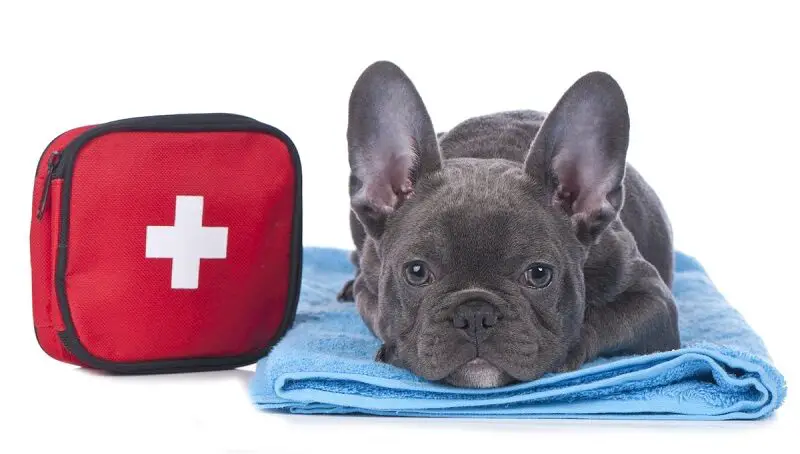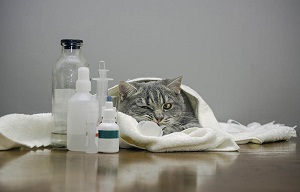
Do Pheasants Make Good Pets?
February 14, 2023
Prevention is and will always be better than any treatment, whether we talk about our health or that of our pets. However, in the case of pets, it can be a little difficult to think ahead and prevent potential accidents or unpleasant events.
Spontaneous injuries don’t happen just to people. Pets can also be put in unpleasant situations, and when their health or even life is put in danger, you need to have the possibility to help them as quickly as possible.
The best solution would be to be able to go right away with your pet to the veterinarian, but sometimes it’s not that simple.
You should always have a first aid kit for your pets. The objects found in the first aid kits are of great help to stabilize the animal’s condition. Then you can take it to the veterinarian without worrying about getting too late.
In general, if you have minimal knowledge about the care of your pet, you can design your first aid kit by yourself, but ideally should be for you to purchase one from specialized stores to make sure that you do not miss any important items.
What is a first aid kit for animals?
As the name suggests, it is the veterinary equivalent of an ordinary first aid kit that we are required by law to equip our cars with. Sure, this kit will never replace a visit to the vet, but it is a necessity, not only to ensure your peace of mind but also to serve you when needed.
A medical kit for animals must contain information, basic equipment for care, and pharmaceuticals essential for first aid in the most common emergency situations, such as accidents or sudden illness, regardless of where you are. To make a kit, you can use a handbag you no longer need, a shoulder bag, a backpack, a metal box, or a large cardboard box. There are so many possibilities, that there is no need to buy a professional medical bag. Choose the option that best suits the occasion. For a kit to keep in the house, a box is an ideal option, but for hiking or holidays, a portable alternative is more convenient.
Each kit should also be conceived according to your pet’s needs and health. For example, if you have an animal with allergies, the kit must contain antihistamines. Or, if you have an animal with a medical history of gastrointestinal problems, your kit should contain the drugs needed to treat potential symptoms. Another aspect to consider is the validity and administration of the medicines and solutions included. Nobody needs an expired medicine or solution that you do not know how to use. For this reason, and in order to facilitate rapid and effective use, the included pharmaceuticals should be labeled with name, purpose, expiration date, and administration.
You might also like my articles about:
What should include a first aid kit for pets
- Tweezers – for situations where the animal is stung by insects or stings itself in a chip;
- A cream with hydrocortisone – ideal for itching, rashes, and eczema;
- A sterile bandage – is necessary for open wounds;
- Oxygenated water – for disinfecting and washing wounds;
- A powder with antibiotics – also for open wounds;
- An antiseptic solution, iodine, or medicinal alcohol – for sterilizations;
- Gauze – for various smaller or larger wounds;
- Cotton swabs – for the application of ointment or cream;
- Scissors – for cutting hair;
- Astringent powder – for bleeding nails;
- Rectal thermometer;
- Muzzle;
- Tourniquet;
- A powerful antihistamine for allergic shocks due to insect stings or contact with certain substances;
- Antibacterial soap.
In addition to the items mentioned above, the pet’s first aid kit may also contain a pair of latex gloves to prevent blood from coming into contact with the skin or to prevent the wound from being contaminated with microbes on your hand, as well as a brochure where you can find the most important first aid instructions depending on the type of pet.
What every dog owner and/or cat needs to know
 In order to identify the potential health problems of the dog or cat in time, it is important to know the following information:
In order to identify the potential health problems of the dog or cat in time, it is important to know the following information:
The normal temperature of the cat is between 37.7oC and 39oC. If your cat has a lower or higher temperature, you should contact your veterinarian immediately.
It is also important to know that a healthy cat has a pulse rate between 160 and 220 beats per minute.
The normal temperature of a dog is 38.2oC – 39.5oC. The pulse varies depending on the age of the dog as follows:
- 110-120 beats per minute for puppies;
- 90-100 beats per minute for adults;
- 70-80 beats per minute in old dogs.
Remember, in a healthy dog, heartbeats are not rhythmic!
Adaptation of the first aid kit according to the pet
The first aid kit composed of all the above elements is a general kit that can be used for several types of pets, especially dogs and cats.
Sometimes, however, the first aid kit needs to be adapted according to the pet. Thus, if you have a hamster or other rodents, the kit should contain a clean towel, magnifying glass, and syringes, among others.
If your pet is a bird, then the first aid kit should contain a heater, eye drops, and an electrolyte solution used for dehydration.
Even fish need a first aid kit, which is different from that of other pets. For example, for fish, you need a quarantine aquarium, in which you can separate healthy fish from the sick. You should also have salt for the aquarium and garlic extract products at hand.
Your veterinarian can advise you best, depending on the type of pet you have, on what your pet’s first aid kit should contain.
